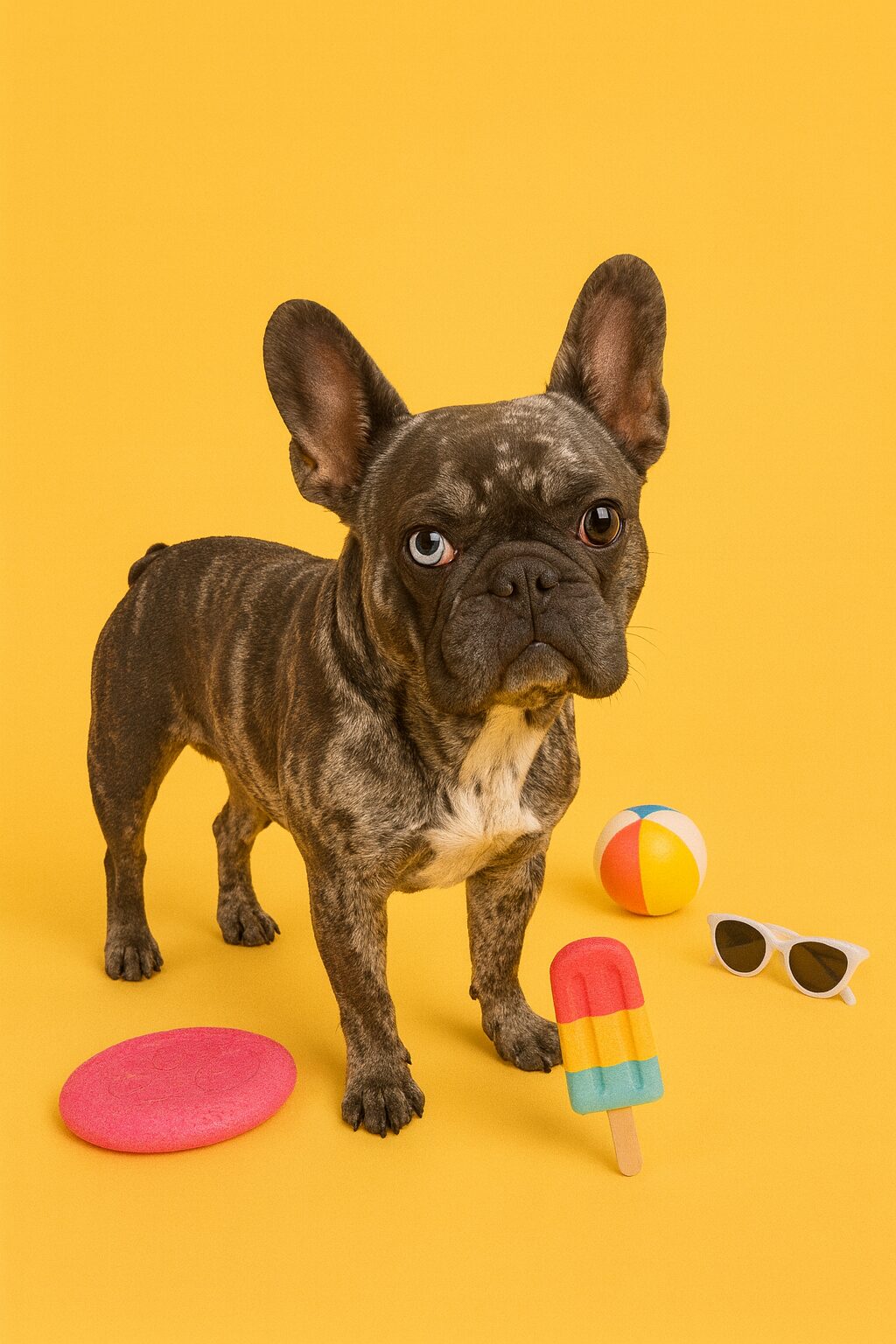Ever caught your pup giving you that mysterious stare or seen their tail wagging wildly and wondered, What exactly are you trying to tell me? You’re not alone. Dogs have their own sophisticated language, and mastering it can strengthen your bond and enhance your pup’s quality of life. Here’s your ultimate guide to decoding dog body language.
🐶 The Tale of the Tail
You’ve probably heard the phrase “a wagging tail equals a happy dog,” but it’s not always that simple:
- Fast Wagging: Typically excitement or happiness, especially when paired with relaxed posture.
- Slow, Rigid Wagging: Often indicates uncertainty or caution. Maven, my expressive Frenchie, usually does this when meeting a bigger, unfamiliar dog.
- High and Stiff Tail: Suggests confidence or dominance.
- Low or Tucked Tail: Signals fear or submission. A thunderstorm rolls in, and Maven’s tail instantly drops—classic anxiety.
👀 Eyes are the Windows to Your Dog’s Soul
Dogs communicate extensively through their eyes:
- Soft Eyes: Relaxed, friendly, content.
- Hard Stare: Could indicate aggression or assertiveness. Pay attention if your dog locks eyes intensely with another pup.
- Whale Eye (showing whites): Typically a sign of discomfort or fear. Maven did this during her first vet visit, which told me she needed extra reassurance.
🐾 Ears Tell a Story
Ears aren’t just for listening; they’re big communicators:
- Relaxed Ears: Natural, neutral state.
- Ears Forward: Interest, curiosity, or excitement. When Maven hears the fridge open, her ears perk up instantly.
- Ears Pinned Back: Usually signals fear, submission, or anxiety.
🐕 Posture and Stance Speak Volumes
Observe the whole-body language:
- Play Bow (front paws down, rear in air): Universal dog language for “Let’s play!”
- Stiff Body, Weight Forward: Could signal aggression or alertness.
- Cowering, Hunched Posture: Indicates fear or stress. Maven adopted this posture during her first thunderstorm. Crate training with calming treats turned out to be our lifesaver.
😋 Mouth and Tongue Movements
Dog mouths say more than “feed me!”:
- Relaxed, Open Mouth (Panting): Happy, relaxed dog.
- Yawning or Lip-Licking: Stress signals or anxiety. Maven does this frequently at vet visits.
- Bared Teeth: Could indicate aggression or fear. Context matters—observe carefully.
🐾 Decoding Vocalizations
Though technically not body language, vocal cues are closely connected:
- Barking: Could mean excitement, alertness, or anxiety. Pay attention to tone and frequency.
- Whining: Often indicates attention-seeking or anxiety. Maven’s midnight whines usually signal her need for a quick potty break.
- Growling: Typically a warning sign—”I’m uncomfortable,” “I’m scared,” or “Back off.”
🐩 Reading Body Language in Context
Always consider context. Tail wagging might mean joy at home but stress at the vet’s office. Maven’s wagging tail during her first grooming session wasn’t happiness; it was nervous anticipation. Context and environment can change meaning drastically.
✅ Tips for Understanding Your Pup
- Observe the Whole Body: Don’t rely on just one body part or signal.
- Consider Context: Different environments can drastically alter your dog’s signals.
- Track Patterns: Keep a journal or mental note of common scenarios. You’ll quickly recognize familiar behaviors and better respond to your dog’s needs.
- Trust Your Gut: If something feels off about your dog’s behavior, don’t ignore it.
🐾 Why Understanding Matters
Knowing how to decode your dog’s body language has significant benefits:
- Enhances Safety: You’ll spot stress signals and potential aggression before situations escalate.
- Improves Communication: A deeper bond forms when you respond accurately to your dog’s signals.
- Boosts Training Effectiveness: Understanding body language can help you recognize when your dog is ready to learn, play, or relax.
🐶 Maven’s Final Snort of Approval
Reading dog body language isn’t always intuitive—it’s a skill that takes time, patience, and observation. Maven taught me more about dog communication than any book ever could. Her unique quirks, from her expressive ears to her subtle tail shifts, continually help me understand her better.
Remember, every dog is unique. Use this guide as a framework, but always trust your intuition and personal knowledge of your pup.
Because, at the end of the day, the bond you share with your dog is all about mutual understanding, trust, and unconditional love. And that’s worth every tail wag, snort, and slobbery kiss.
🐾 Meet Maven: A Book Full of Snorts, Sass, and Heart
Maven the Maybe-Something-Else is a heartwarming and hilarious picture book that celebrates identity, imagination, and the weirdly wonderful ways our pets show us who they really are. Inspired by the true story of a little Frenchie with a big personality, this story helps kids learn to love themselves — quirks and all.

Leave a Reply